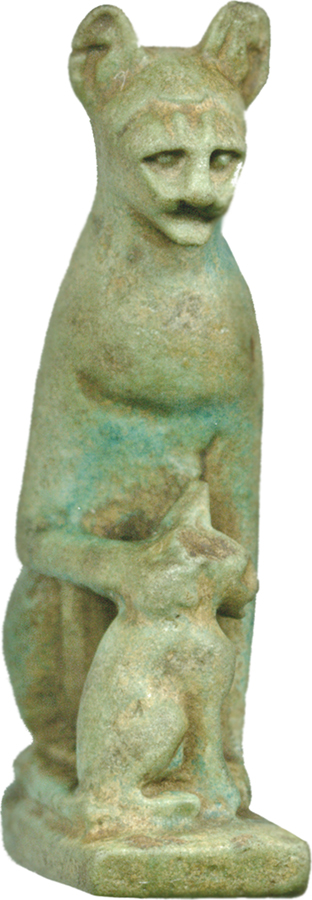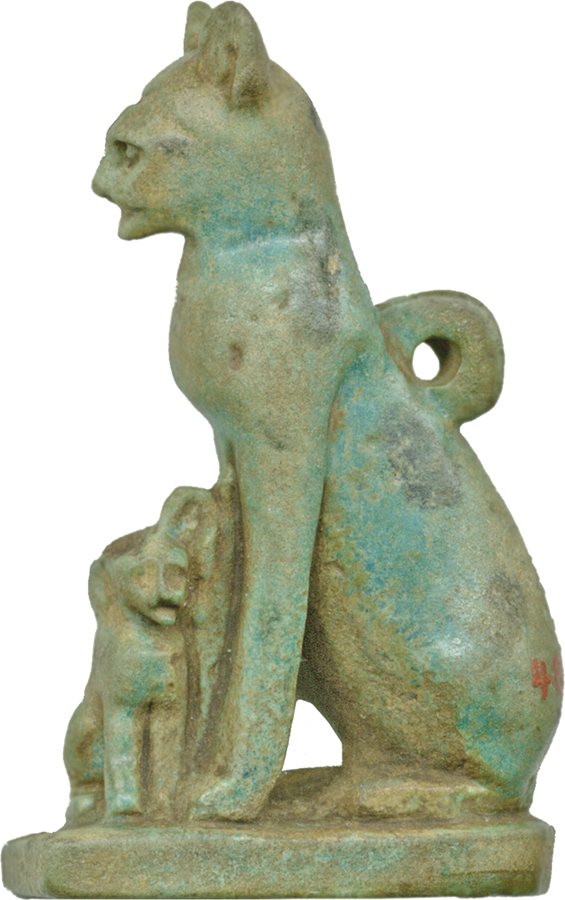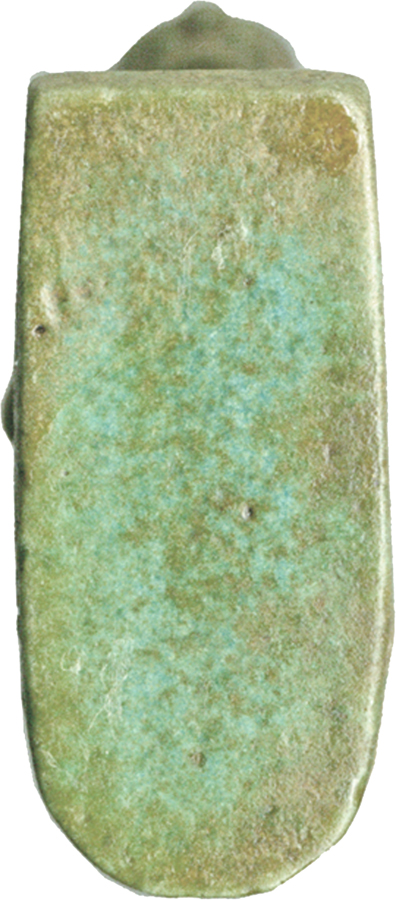Cat with Kittens
(Ancient Egypt and Nubia )
Representations of cats are well-known in Ancient Egypt from the 2nd millennium BCE. The onomatopoetic Egyptian name was "miu" (mjw) for the male, and "mit" (mjjt) for the female cat. Egypt's economic base was agriculture and therefore rodent- and snake-hunting felines were very much appreciated. In terms of religious beliefs the male cat was connected to the sun-god, and the female cat to Bastet. Particularly in the Late and Greco-Roman Periods representations of the goddess as well as cats and cats with kittens became very popular to symbolize fertility and renewal.
This amulet displays a seated female cat with a kitten in front of her. This kitten is facing the right and has the same posture as its mother. The amulet has a rectangular base and a loop on the back of the cat.
Provenance
Provenance (from the French provenir, 'to come from/forth') is the chronology of the ownership, custody, or location of a historical object. Learn more about provenance at the Walters.
Henry Walters, Baltimore [date and mode of acquisition unknown]; Walters Art Museum, 1931, by bequest.
Exhibitions
| 2006-2007 | Daily Magic in Ancient Egypt. The Walters Art Museum, Baltimore. |
Conservation
| Date | Description | Narrative |
|---|---|---|
| 7/23/1959 | Treatment | cleaned |
| 6/12/1962 | Treatment | other |
| 7/30/1998 | Examination | survey |
Geographies
Egypt (Place of Origin)
Measurements
H: 1 13/16 x W: 5/16 x D: 1 in. (4.61 x 0.87 x 2.6 cm)
Credit Line
Acquired by Henry Walters, by 1931
Location in Museum
Not on view
Accession Number
In libraries, galleries, museums, and archives, an accession number is a unique identifier assigned to each object in the collection.
In libraries, galleries, museums, and archives, an accession number is a unique identifier assigned to each object in the collection.
48.1554










